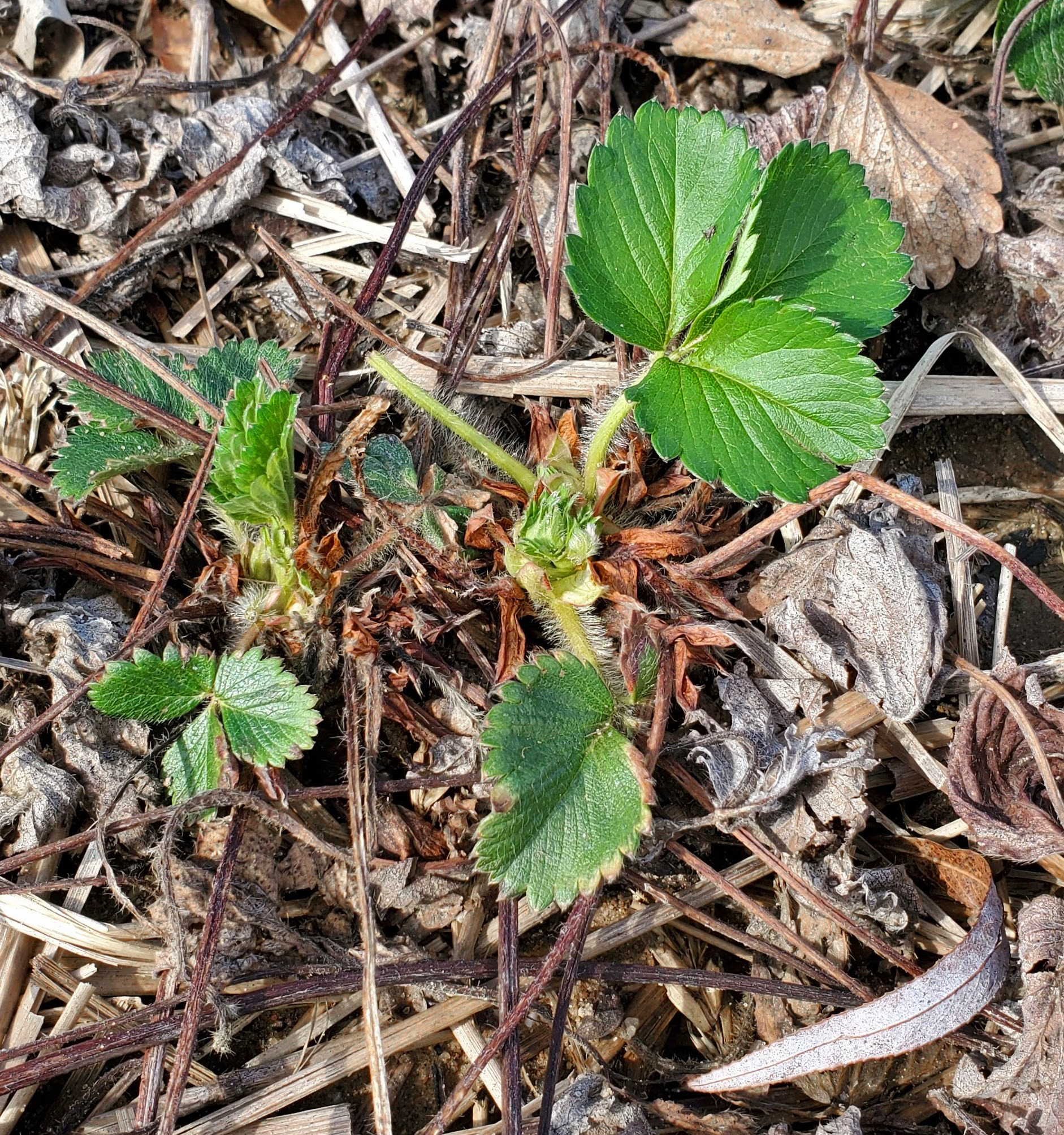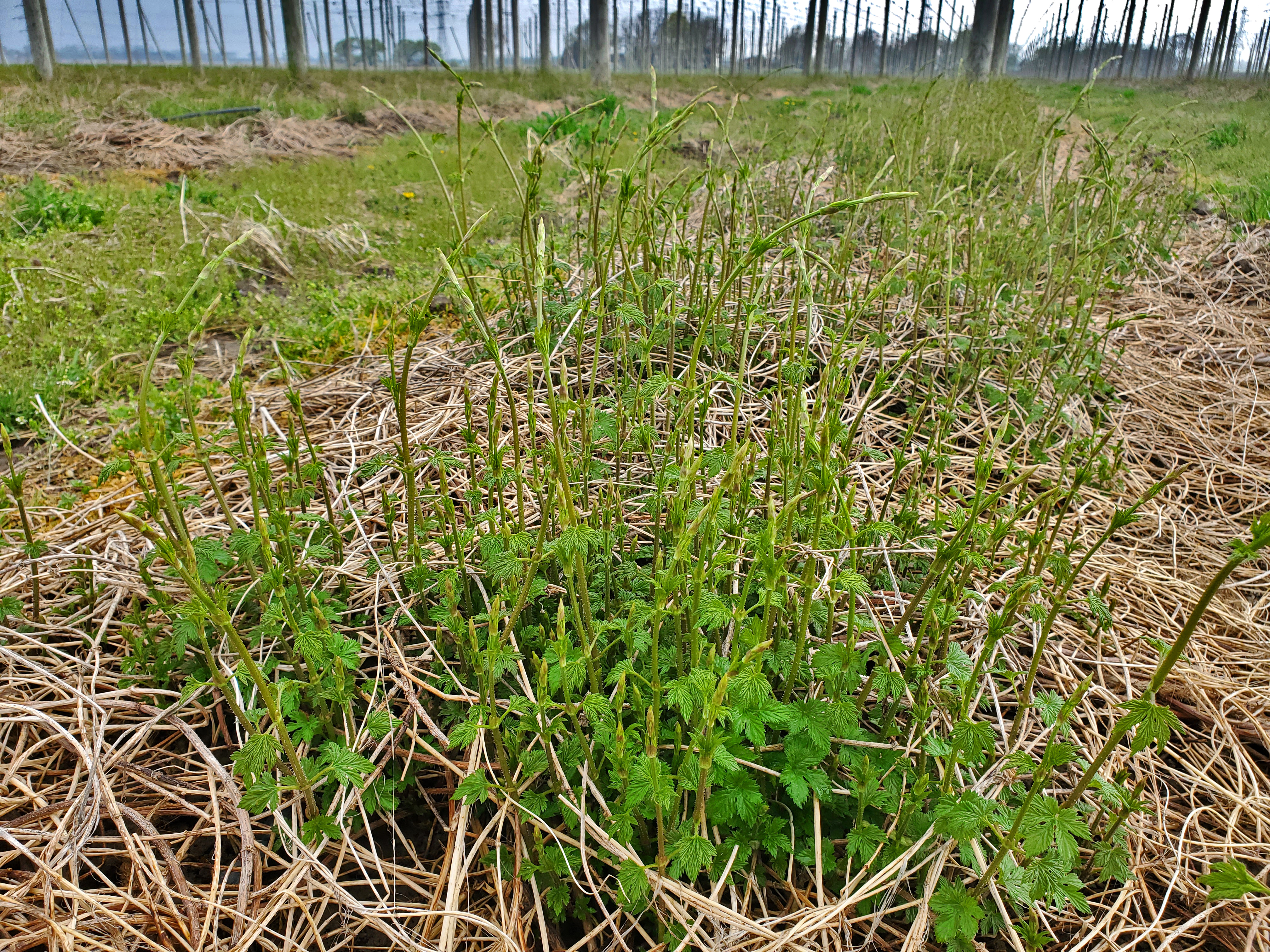Southwest Michigan fruit update – April 13, 2021
Many tree fruits are blooming. Small fruits are leafing out.

Weather
Last week started warm and sunny. High temperatures were in the upper 70s. Lows were in the upper 50s. A storm system came to the area on Thursday, April 8, bringing rain and cooler temperatures. Another system on Saturday brought even cooler temperatures. By Sunday, highs were in the 50s, but the lows remained in the low 40s. Total rain for the week was about three-quarters of an inch.
The forecast for this week is for highs around 50 and lows in the upper 30s. The best chance for rain is Thursday, April 15.
Even with last week’s rain, soils are still dry. Soil temperatures have risen quickly to 50 degrees Fahrenheit in many areas. With the near record heat early in the week, we picked up a lot of growing degree days (GDD) last week: 125 GDD base 42 and 71 GDD base 50.
|
Southwest Michigan GDD summary from March 1 - April 11, 2021 | |||
|---|---|---|---|
|
Station |
GDD 42 F |
GDD 45 F |
GDD 50 F |
|
Benton Harbor (SWMREC) |
305 |
241 |
152 |
|
Lawton (Lawton) |
307 |
242 |
151 |
|
Fennville (TNRC) |
257 |
199 |
122 |
|
Average for the SW region |
299 |
236 |
148 |
|
Average last week |
174 |
132 |
77 |
Frost/freeze information
April began with a classic radiation freeze on Friday, April 2, with low temperatures dropping into the mid- and upper teens. The coldest temperatures were along the I-94 corridor (12-15 F). There were warmer temperatures to the south. Damage has been observed in tree fruit. Early blooming apple and peach varieties appear slightly damaged (10-20% loss). Late blooming apricots have a small amount of damage (less than 10%). Cherries seem the most impacted with damage variable by site and variety (20-80%).
Forecast lows for the next week are for the mid-30s. Most tree fruit are at or near bloom. They can be damaged by temperatures in the mid- to upper 20s. Widespread impacts are not expected, but care should be taken in frost prone areas and cold pockets in orchard blocks.

Tree fruit
Unseasonably warm temperatures have pushed tree development such that most tree fruit types are at or close to bloom. Most tree fruit would be damaged by temperatures below 28 F but would need to below 2 5F for severe damage. We are seeing some damage to flower pistils in low sites for most fruit crops, but damage is most severe on sweet cherries. Crop prospects are still good. Here is a link to tree fruit bud critical temperatures and another with pictures.
For those interested in putting up mating disruption for moth species, this is a good time to do it. Oriental fruit moth biofix occurred last week, but little to no moth flight has occurred yet. On early seasons, early egglaying and larvae development is often knocked back by cold temperatures. There are a few weeks before codling moth and leafroller biofixes.
Apricots are finishing bloom or are in the shuck, depending on variety. A reminder to organic growers that apricots are very sensitive to sulfur and it should never be used on apricots.
Peach and nectarine are blooming, with showy bloom types at full bloom in the southern end of the region. There seems to be little damage in peaches. Pruning is behind due to rapid tree development this past week. Oriental fruit moth biofix was predicted on April 6-8 depending on site, but not much flying has occurred due to low temperatures.
In cherries, tarts are at first white and sweets are at first to full bloom. The freeze on April 2 hurt mainly sweet cherries and caused damage to tart cherries at some sites, leaving others nearby untouched. We are past the window when copper sprays can be safely applied to sweet cherries for bacterial canker, but copper can still be used on tart cherries.
In plums, Japanese plum buds are at full bloom. European plums are at popcorn to first bloom. Prune out black knot and dispose of the knots by burning or removing from the orchard. Sanitation is very important in managing this disease. Black knot management and brown rot are the primary disease concerns now.
Apple buds are at early to full pink, depending on the variety. Some damage from the Good Friday (April 2) freeze has been seen on king bloom and on side bloom in lower sites. Local monitoring sites showed continued apple scab ascospore catches during rains since March 23. Weather conditions have been sufficient for one to five infection periods, with the most in the Lawrence and Lawton, Michigan, areas. Powdery mildew is a concern now that we are in pink.
Pears are at tight cluster to first bloom.
Small fruit
Grape buds are swelling. Concord and other earlier hybrid varieties are at early bud swell (doeskin) and late swell (as the buds show green color) in southern locations. Leaves are starting to separate in some locations. Most vinifera are at early bud swell. Climbing cutworms and flea beetles can be a concern as buds swell and begin to open, especially as growth slows down with the cooler forecasted temperatures.
Blueberry flower buds have burst. They are at tight cluster. Vegetative buds are almost a half-inch long and leaves are starting to unfold. See blueberry growth stages for descriptions and estimates of the critical temperatures for each bud stage.
With the rain forecast for later this week, growers will want to protect against mummy berry. Green tissue is out and mummy berry mushrooms (apothecia) are out. Rainy conditions later this week could be mummy berry shoot strike infections and growers should apply fungicide to protect the green shoots. Growers still have time to apply copper, Sulforix or lime sulfur products to suppress early season diseases, especially early twig blights.
In strawberries, new leaves have emerged from the crown and flower trusses are emerging from the crown. Sprinklers for freeze protection should be out and tested to protect against freezes after the flowers emerge. Overwintering mulches should be removed and raked between the rows.

Bramble leaves are opening up. Dormant pruning should be completed by now. In summer bearing raspberries, last year’s primocanes should be headed (cut back) to the desired height and any remaining floricanes from last year should be removed. Fall bearing raspberry primocanes are emerging from the ground.
Currants are at first bloom.
Miscellaneous crops
Hops are emerging from the crown. More advanced varieties such as Cascade and Nugget have shoots up to 18 inches long and several leaves opened. Preseason herbicide treatments should be complete. Mildew and spider mite scouting should begin soon.

Chestnuts buds are swollen.
Hazelnut leaves are out.
Saskatoons are beginning to bloom.
Cranberries are still dormant.
Upcoming meetings
Our regular southwest Monday Fruit IPM Updates are available online. You need to register to receive the Zoom link and password for these meetings. The webinars are free and one pesticide applicator credit is available for each meeting. We had over 70 growers attending our Monday meetings last year.
The Statewide Spring Tree Fruit Webinar series will be the first two weeks of April. One topic will be discussed over the lunch hour each day. You need to register to receive the Zoom link and password for these presentations. The webinars are free of charge and one pesticide applicator credit is available for each meeting.
Related articles
- Freeze damage depends on tree fruit stage of development
- Using Enviro-weather’s regional overnight temperature report during cold events
- Treat peach leaf curl now
- Managing bacterial canker in sweet cherries: What are the options?
- Early insect control with horticultural oils
- Dormant oil for tree fruit pest management in 2015
- Scouting and management of mummy berry in blueberries
- Mummy berry has returned, and new products are available for control
- Monitor grape buds for climbing cutworm and flea beetles
- Frost, Critical Temperatures, and Frost Protection
- What can fruit growers do if a freeze is coming?



 Print
Print Email
Email